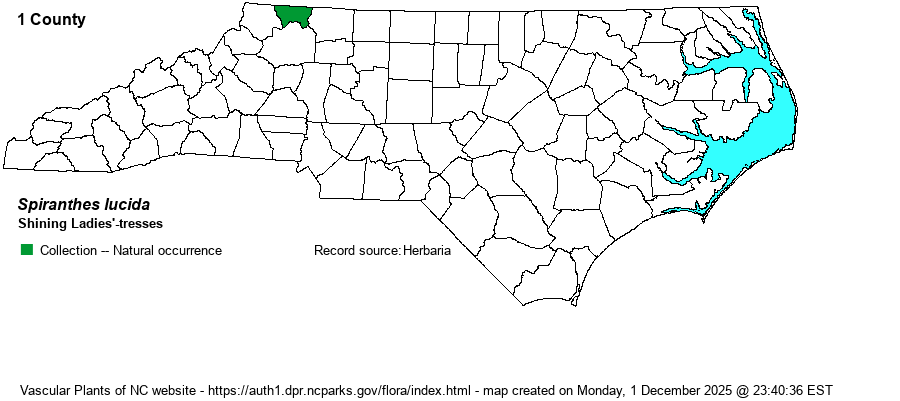| Author | (H.H. Eaton) Ames | |
| Distribution | Known only from Alleghany County, in the northern Mountains along the VA border. It had been reported in NC in several old references, but it wasn't until the 1990's when it was conclusively documented in the state.
This is a Northern and Midwestern species, ranging from eastern Canada south to extreme northwestern NC, much of TN, central AL (disjunct), and northern AR. | |
| Abundance | Extremely rare in the state, known from just a single site, where first discovered in 1995, and seen as late as 2014 (last report in the NC NHP database). Not surprisingly, this is a State Endangered species. | |
| Habitat | The habitat is NC is quite restricted and unusual -- "seepage over amphibolite" (NC NHP). Amphibolite is a mafic rock that yields circumneutral to slightly basic soils. It should be looked for at the Bluff Mountain fen. Other habitats in the range include moist shores, wet meadows, and other sunny moist, calcareous sites. | |
| Phenology | Blooms from May to July, and fruits shortly after flowering. | |
| Identification | This is a short species of ladies'-treeses, growing mainly just 6-7 inches tall, on average. However, it has several ranks/spirals of a few dozen flowers, as in a few others such as S. cernua, at the top of the stem. The white flowers are quite distinct in having the top side of the lip being bright yellow, a stronger or more extensive yellow color than in other species that may not be completely white. There are a few basal leaves, but you should identify the species mainly by its fairly dense flower cluster (flowers not in a single rank) and the bright yellow top side of the lip. Sadly, with just one known state location, a biologist has little chance of finding a population in NC on his or her own. | |
| Taxonomic Comments | None
| |
| Other Common Name(s) | Wide-leaved Ladies'-tresses | |
| State Rank | S1 | |
| Global Rank | G4 | |
| State Status | E | |
| US Status | | |
| USACE-agcp | FACW link |
| USACE-emp | FACW link |

